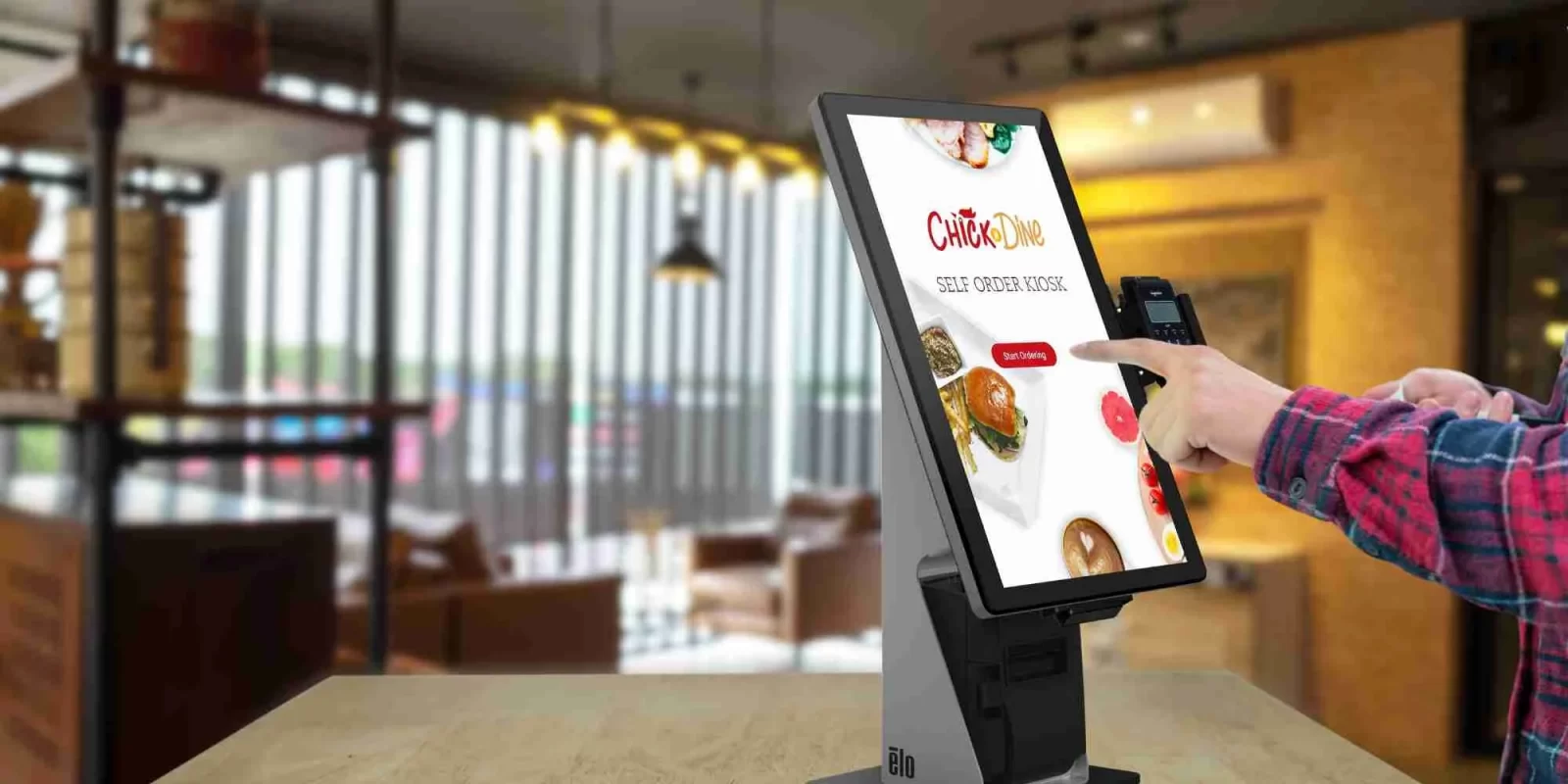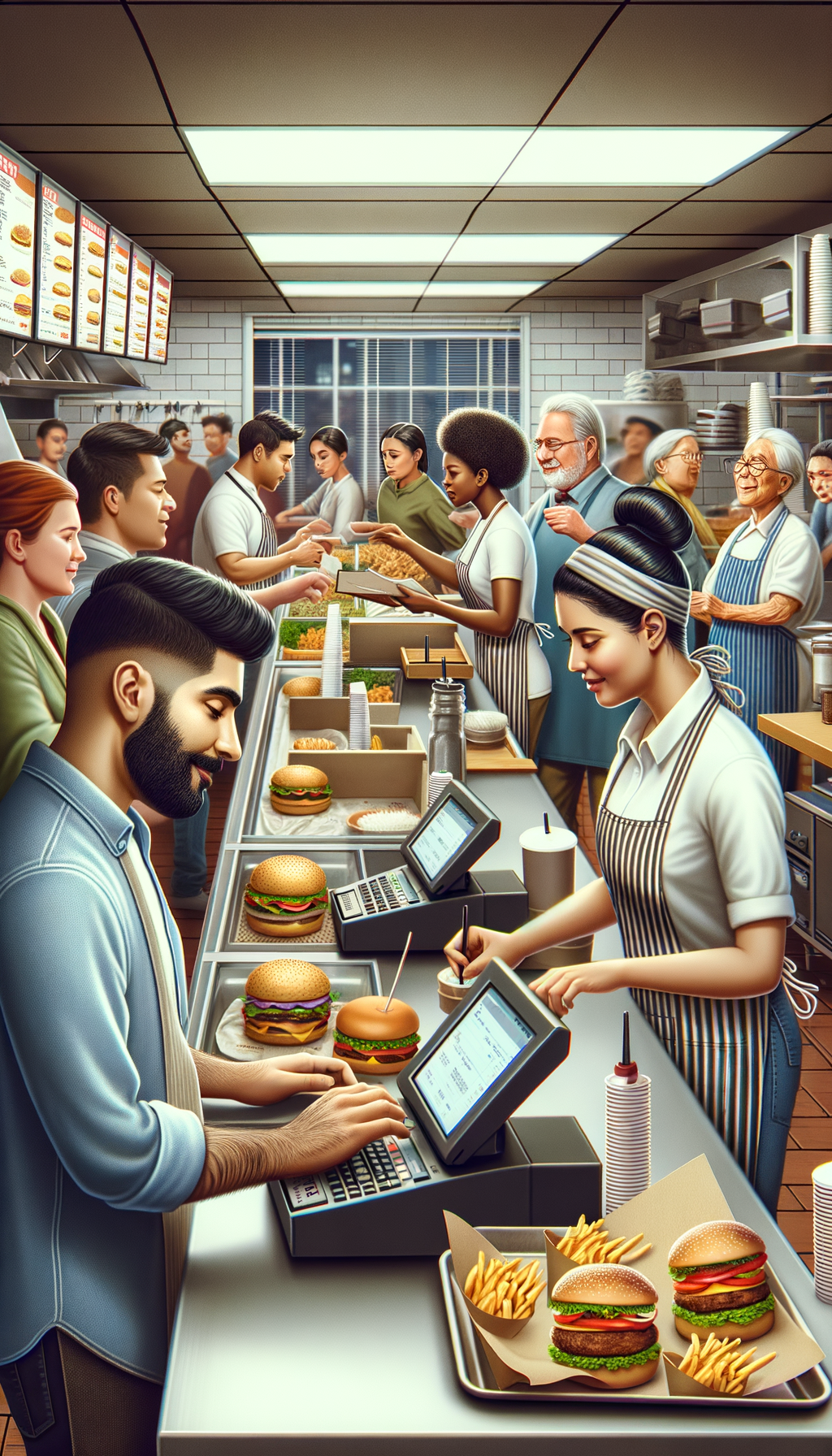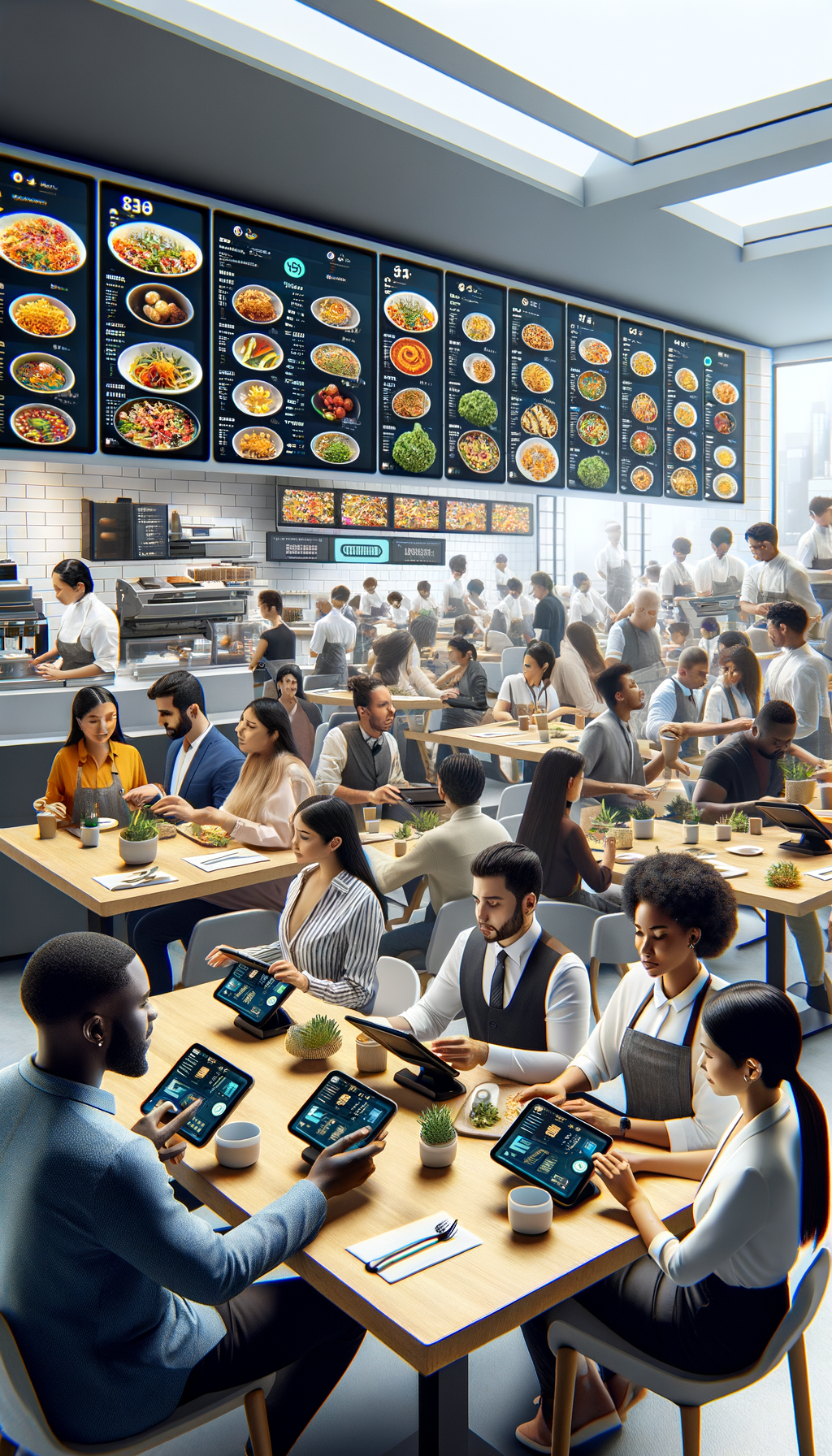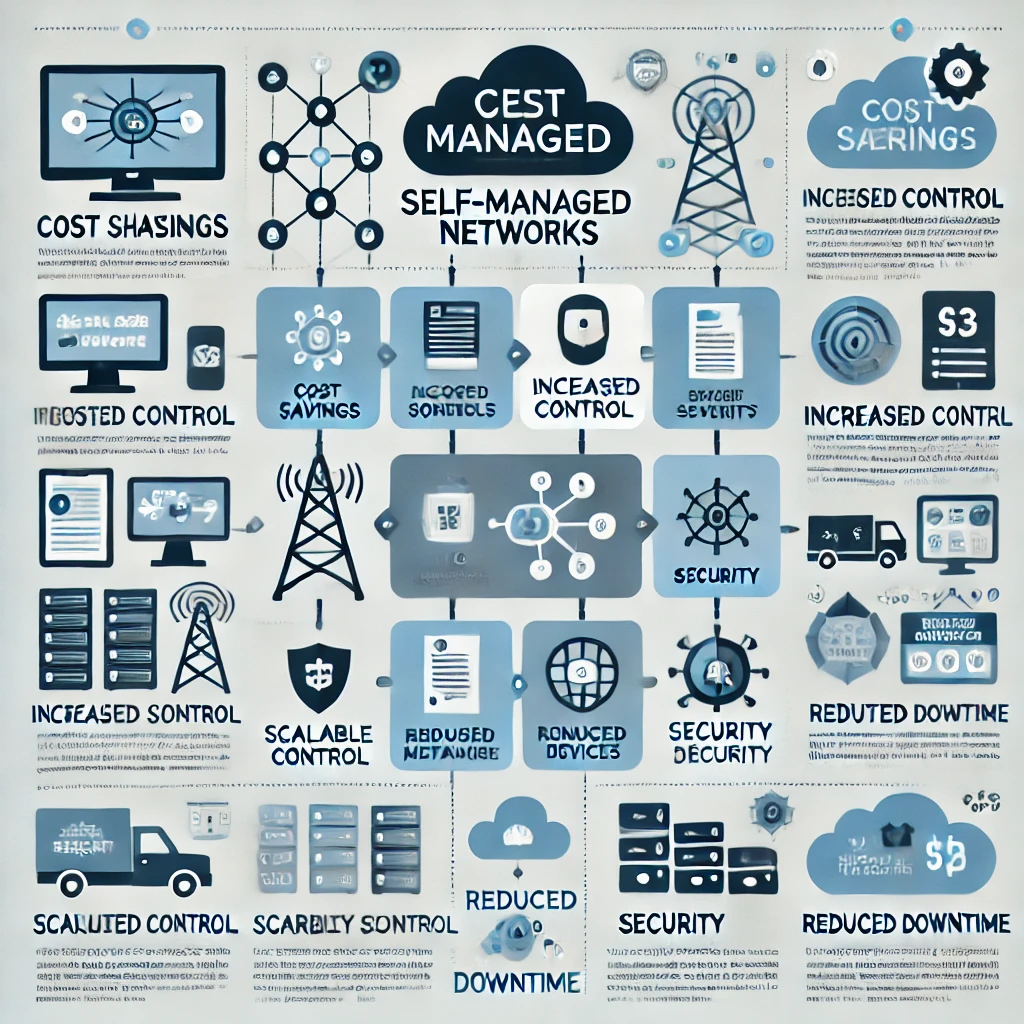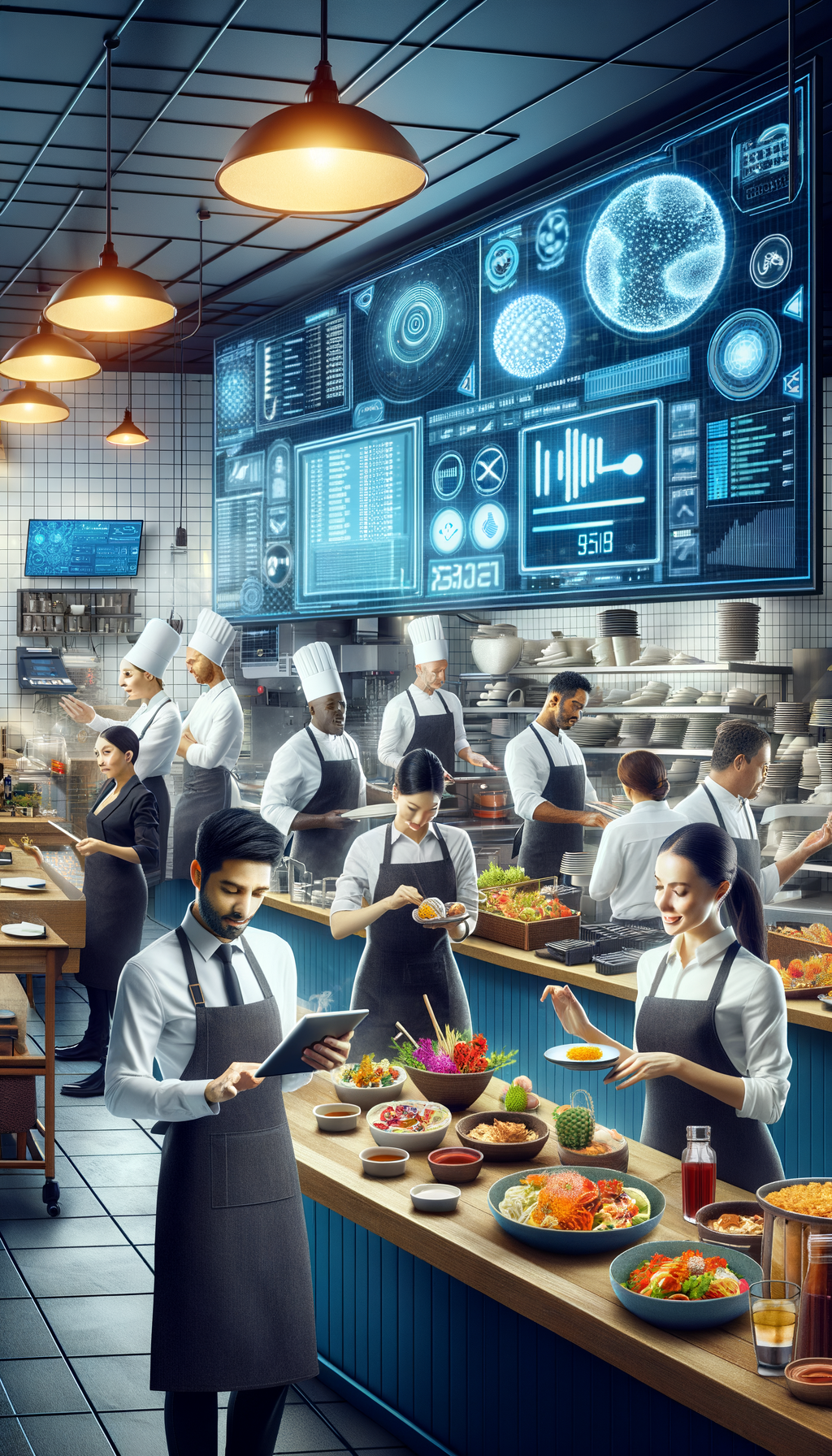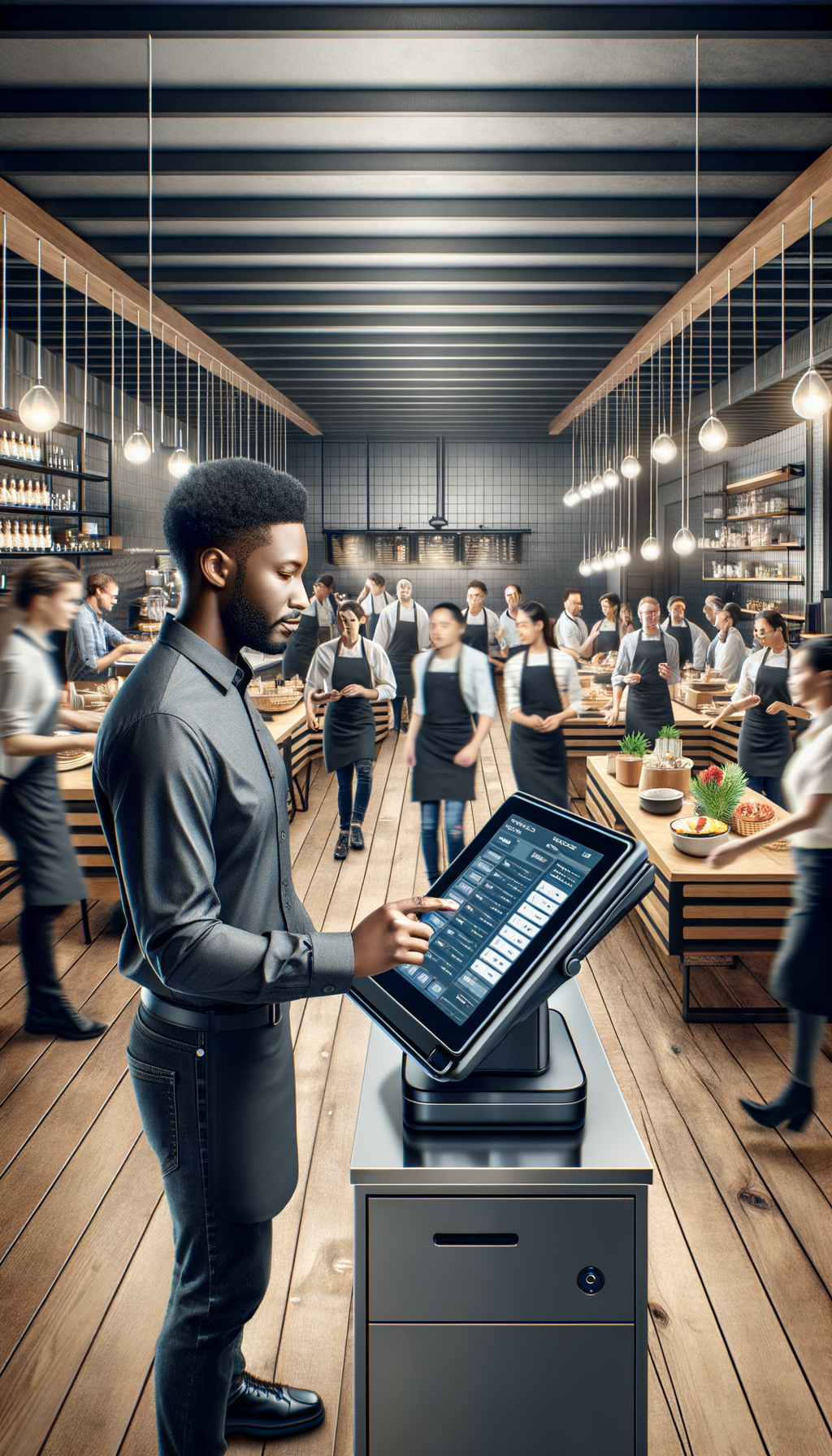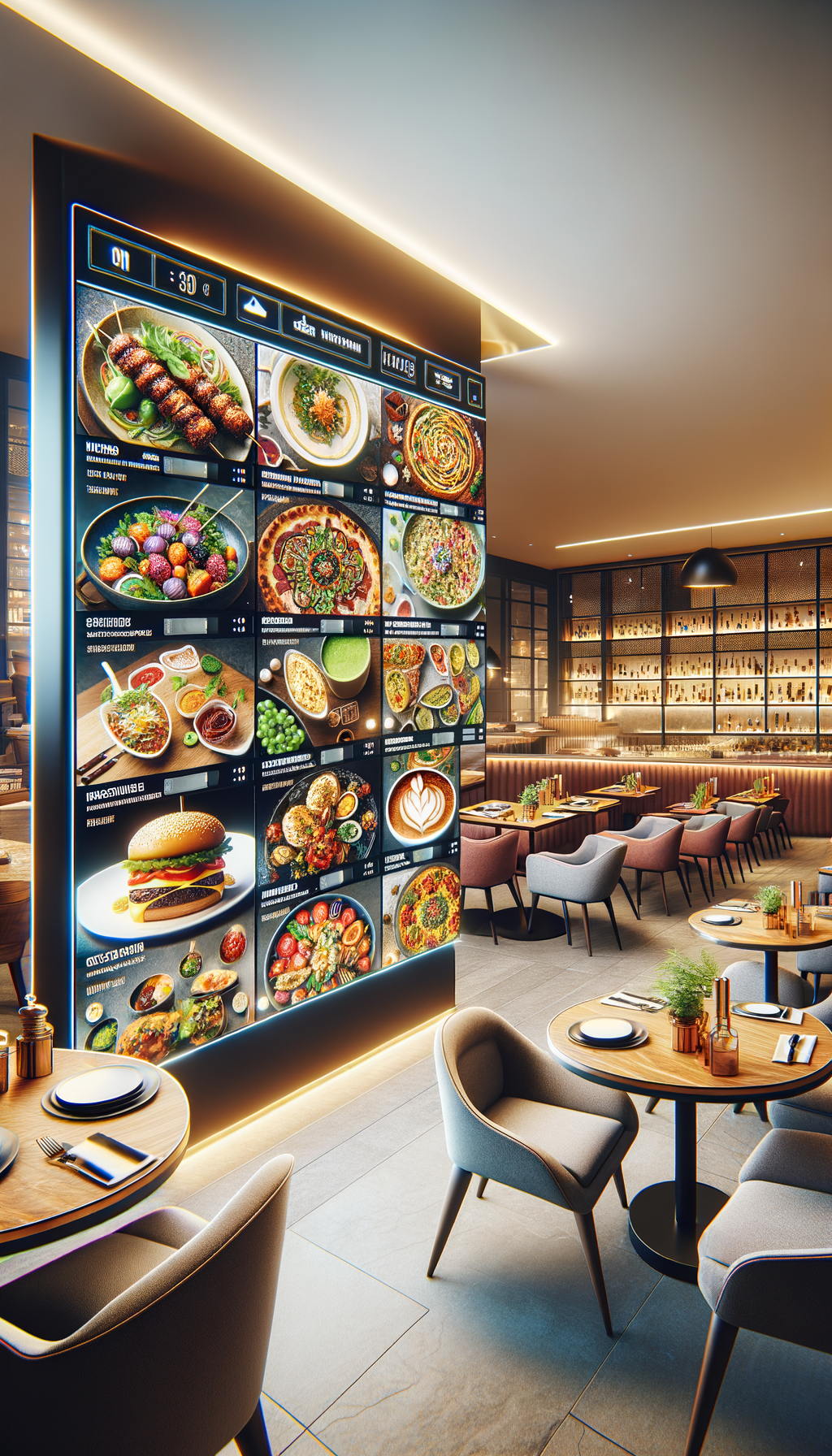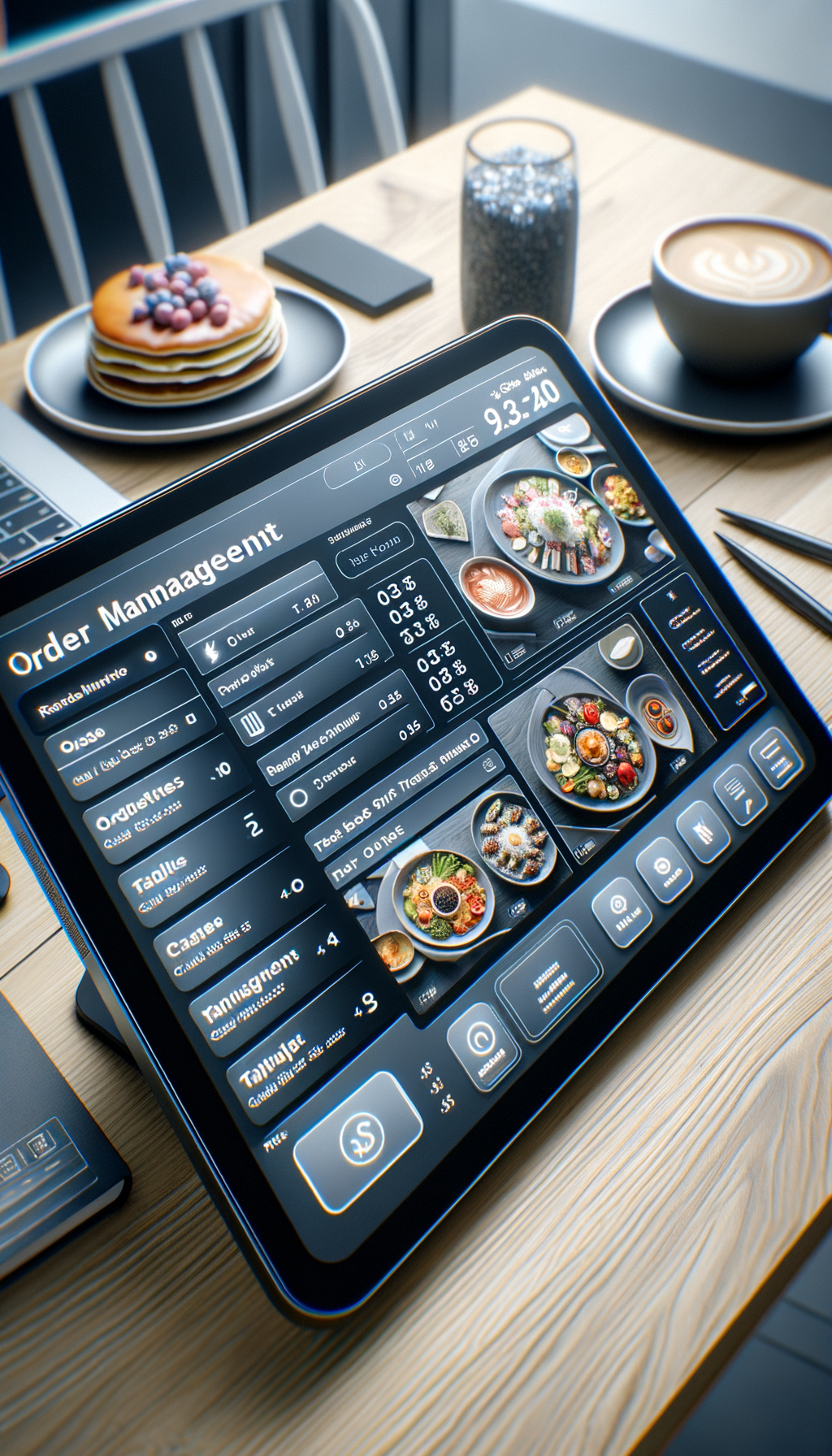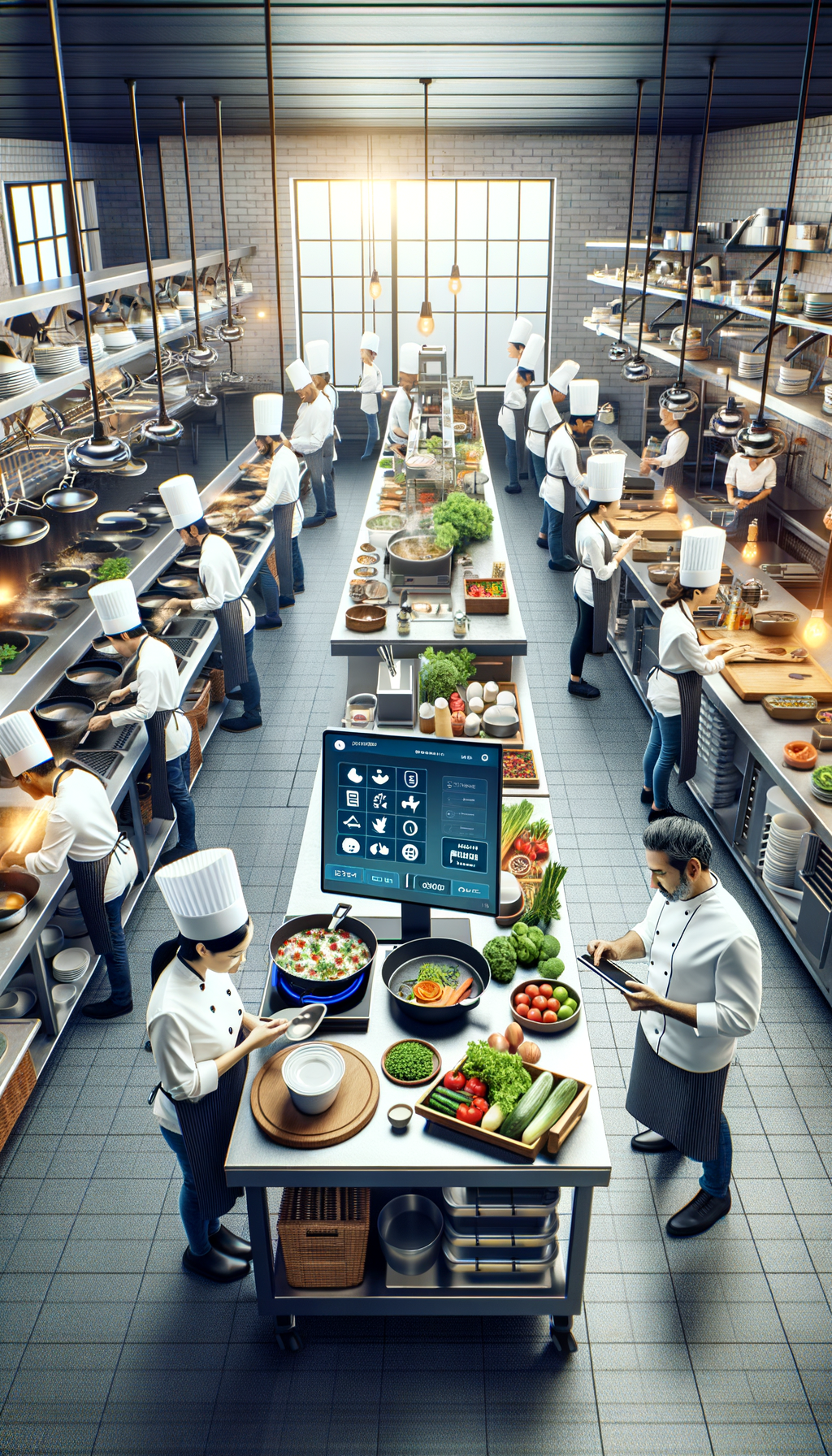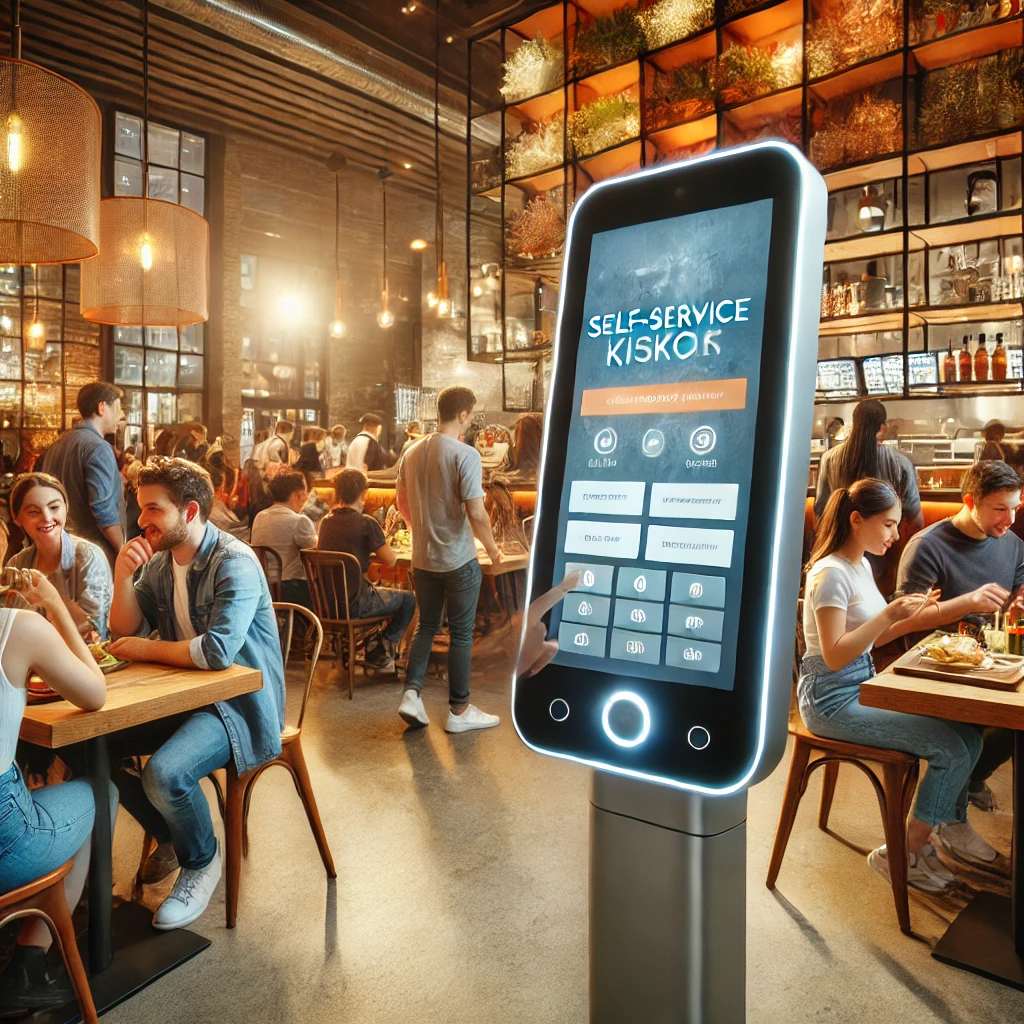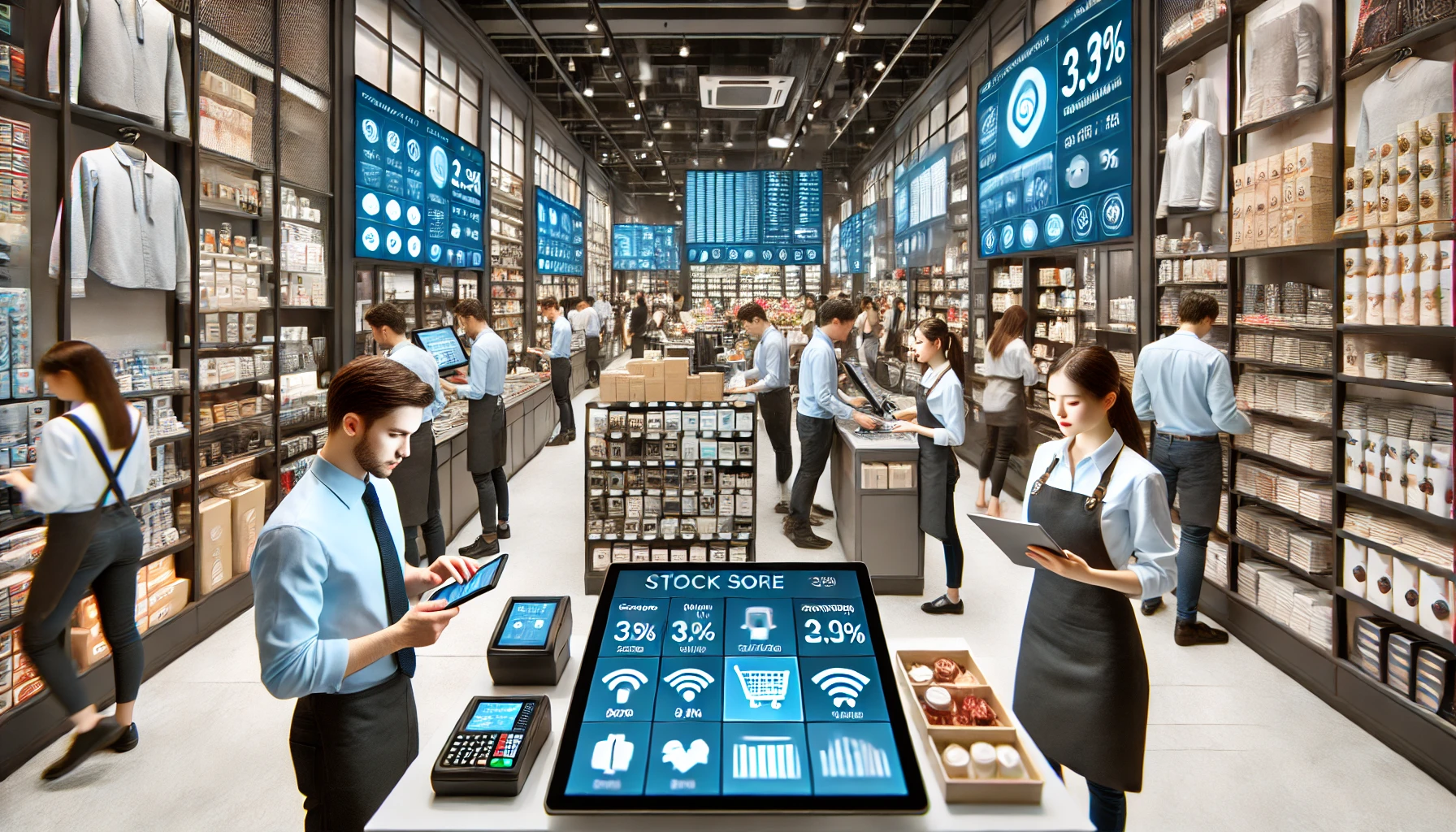Enhance Restaurant Security with Ubiquiti Cameras and AI Solutions
Navigating Economic Turbulence: QSR Survival Strategies
Mastering Restaurant Operations: Essential Running Tips
Transform Your Restaurant Atmosphere with Phoenix Geeks’ Sound Systems
Stay Connected: The Essential Benefits of Cellular Backup
Revolutionizing Restaurant Operations with AI Automation
Investing in Contactless Payment: A Restaurant’s Edge
Streamline Your Service with Digital Menu Boards and Secure Networks
Kiosk vs. Counter Ordering: Pros, Cons, and the Best Strategy for Your Restaurant
How QSRs Can Leverage AI to Boost Efficiency, Profits & Customer Satisfaction
How QR Codes Enhance Guest Experience and Boost Restaurant Efficiency
Ensure Uninterrupted Restaurant Operations with Phoenix Geeks’ Backup Internet Solutions
Revolutionizing Restaurants: The Impact of Contactless Tech
Enhance Your Team’s Skills: Toast Training with Phoenix Geeks
Revitalize Your Network with Expert Cleanup Services
Unlocking Efficiency: The Perks of a Self-Managed Network in Restaurants
Enhance Your Restaurant’s Connectivity with Phoenix Geeks
Maximizing Efficiency: The Importance of Cellular Backup in Restaurants
Enhancing Restaurant Security: Self-Managed Networks
Streamline Your Online Ordering Menu with Phoenix Geeks
Transforming Spaces: Digital Signage Installation with Phoenix Geeks
Unlocking the Power of a Self Managed Network with Phoenix Geeks
Unlocking Efficiency: The Power of a Self-Managed Network in Restaurants
Expert POS Installation Services for Restaurants by Phoenix Geeks
Expert Network Management by Phoenix Geeks in Phoenix, Arizona
Elevating Guest Experience: Personalization & Predictive Insights
Revolutionizing Personalization in Guest Services
Introduction
In an increasingly competitive hospitality landscape, personalization has become a key differentiator for businesses aiming to enhance the guest experience. By harnessing customer data and preferences, establishments can tailor their services to meet individual needs, creating memorable experiences. This shift towards a personalized approach not only fosters loyalty but also drives customer satisfaction, encouraging repeat visits.
Businesses can leverage advanced technologies such as AI and machine learning to analyze guest behaviors and preferences. This data enables them to offer customized recommendations, ranging from room selections to personalized welcome messages. As a result, guests feel valued and understood, leading to a more enjoyable stay. Hotels and restaurants that prioritize personalization are likely to see an increase in customer retention and positive reviews, further solidifying their reputation.
Moreover, the importance of staff training cannot be overstated. Employees who understand the value of personalized service can create deeper connections with guests, enhancing their overall experience. As the industry continues to evolve, the focus on personalization will only grow stronger, setting new standards for guest expectations.
The Power of Predictive Menus in Dining
In the realm of dining, predictive menus are transforming how guests choose their meals. By analyzing past dining habits and preferences, restaurants can curate menus that proactively suggest dishes, improving the dining experience. This approach not only streamlines the decision-making process for guests but also increases the likelihood of upselling and higher sales.
Predictive menus rely on sophisticated algorithms that take into account variables such as weather, seasonal ingredients, and even trending dishes. For example, a restaurant might highlight hearty, warm dishes during colder months while offering light, refreshing options in the summer. This level of foresight ensures that guests are presented with options that align with their current preferences and situation, creating a more satisfying dining experience.
Furthermore, implementing this technology can lead to more efficient kitchen operations. By anticipating what dishes will be popular at any given time, kitchens can manage their inventory and reduce food waste, ultimately contributing to a more sustainable business model. As predictive technology advances, we can expect an even more refined approach to menu offerings in the future.
Creating Seamless Interactions Across Platforms
The guest experience today is multi-faceted, often spanning various platforms and devices. As such, creating seamless interactions across these touchpoints is crucial for enhancing overall satisfaction. Whether guests are booking a reservation online, checking in via a mobile app, or providing feedback through social media, a consistent and integrated experience is essential.
To achieve this, businesses must invest in technology that connects all guest interactions. Implementing a unified communication system allows for real-time updates regarding reservations, menu changes, or special promotions, ensuring that guests are well-informed throughout their journey. Such integration not only improves efficiency but also reduces friction, making interactions feel more fluid and intuitive.
Moreover, businesses should prioritize creating user-friendly interfaces that cater to diverse guest demographics. As technology becomes more prevalent, it is vital to offer options that are accessible and straightforward for everyone. By focusing on seamless interactions, businesses can foster a sense of loyalty and encourage guests to return, knowing they will have a consistently excellent experience.
Future Trends in Guest Experience Enhancement
Conclusion
As we look to the future, several trends are poised to shape the guest experience landscape. From the growing emphasis on sustainability to the increasing integration of artificial intelligence, businesses must stay ahead of these developments to remain competitive. Providing personalized experiences, predictive dining options, and seamless interactions will be pivotal in attracting and retaining guests.
Sustainability, in particular, is becoming more important to consumers. Businesses that adopt eco-friendly practices and promote them effectively will resonate with environmentally conscious guests. This trend not only enhances the guest experience but also contributes to a positive brand image and loyalty.
Ultimately, the future of guest experience will rely on an adaptive approach, where businesses embrace change and continuously seek ways to innovate. By prioritizing personalization, predictive insights, and seamless interactions, the hospitality industry can elevate guest experiences to new heights, ensuring long-term success in a rapidly evolving market.
Navigating the Top Challenges in Quick Service Restaurants
Identifying Key Challenges Faced by Quick Service Restaurants
Introduction
The quick service restaurant (QSR) industry is dynamic and competitive, often presenting unique challenges that can hinder growth and profitability. Understanding these hurdles is crucial for operators aiming to enhance their service offerings and improve customer satisfaction. From labor shortages to food safety concerns, quick service restaurants must navigate a multitude of issues to remain viable.
Labor shortages continue to plague the industry, with many establishments struggling to fill key positions. This not only impacts service speed but also employee morale and retention. Furthermore, the demand for skilled workers is at an all-time high, compelling QSRs to reassess their hiring practices and employee benefits to attract talent.
Additionally, food safety regulations are becoming increasingly stringent. Quick service restaurants must ensure they adhere to local health codes and safety standards, which requires regular staff training and investment in quality control measures. Failure to address these challenges can lead to severe repercussions, including fines and damage to the restaurant’s reputation.
Strategies to Improve Customer Service in Fast Food
Providing excellent customer service is pivotal for QSR success. Many consumers choose fast food not just for the food quality but for the speed and efficiency of service. Training staff to deliver prompt and friendly service can significantly enhance the customer experience and encourage repeat visits.
Implementing technology can also streamline service delivery. Self-service kiosks and mobile ordering apps reduce wait times and allow for a more customized experience for customers. These solutions not only improve service efficiency but also gather valuable data on customer preferences, which can inform menu adaptations.
Moreover, fostering a positive work environment contributes to better service. Happy employees are more likely to provide excellent customer interactions. QSRs should invest in employee training and development programs that empower staff and promote a culture of service excellence.
Enhancing Operational Efficiency in Quick Service Settings
Operational efficiency is critical for QSRs to maximize profitability. Streamlining kitchen operations through better layout and workflow practices can decrease food preparation times and minimize waste. This includes regular assessments of equipment and supplies to ensure they meet operational needs.
Additionally, implementing inventory management systems can greatly assist in tracking stock levels and reducing overhead costs. By analyzing sales data, QSRs can predict demand more accurately, thereby optimizing their ordering processes and minimizing excess food waste.
Collaboration with suppliers is another avenue for enhancing operational efficiency. Establishing strong relationships with suppliers can lead to better pricing, timely deliveries, and access to high-quality ingredients, ultimately benefiting the overall service quality.
Adapting to Market Trends and Consumer Preferences
The quick service restaurant landscape is continually evolving, driven by changing consumer preferences and market trends. To remain competitive, QSRs must be agile and responsive to these shifts. This includes offering healthier menu options, accommodating dietary preferences, and incorporating sustainable practices.
Regularly updating the menu based on seasonal ingredients and popular food trends can attract new customers and retain existing ones. Additionally, promoting plant-based and organic choices aligns with the growing demand for healthier eating options and can set a restaurant apart from its competitors.
Finally, leveraging social media and digital marketing strategies is essential to engage with customers effectively. By staying active on social platforms, QSRs can raise brand awareness, promote new offerings, and gather customer feedback to improve their services.
Conclusion
The challenges faced by quick service restaurants are multifaceted, but with strategic planning and implementation, they can be effectively addressed. By focusing on customer service, operational efficiency, and market adaptability, QSRs can not only overcome these obstacles but thrive in a competitive marketplace.
Elevate Your Restaurant Experience with Digital Menu Boards
Introduction
In today’s fast-paced dining environment, restaurants continuously seek innovative solutions to enhance customer experience and streamline operations. One such solution gaining popularity is the digital menu board. These high-tech displays not only provide visually appealing menus but also facilitate real-time updates, promotions, and customer engagement. This article explores the myriad ways digital menu boards can elevate your restaurant.
Transforming Customer Engagement with Digital Menus
Digital menu boards revolutionize how customers interact with your offerings. By showcasing vibrant images and enticing descriptions, they draw attention and stimulate appetite. Unlike traditional static menus, digital boards enable restaurants to highlight special dishes or limited-time offers that can engage customers more effectively. Additionally, with the use of interactive features, customers can navigate through options easily, making their dining experience more pleasant and efficient.
Moreover, digital menus can be updated instantly to reflect changes in stock or seasonal dishes. This flexibility ensures that customers are always informed about the freshest options available, enhancing their overall experience. Furthermore, integrating customer feedback through digital platforms can foster a sense of community and connection in your restaurant, encouraging customer loyalty and repeat visits.
Enhancing Aesthetic Appeal in Your Restaurant Space
The visual impact of digital menu boards is undeniable. They can transform the ambiance of your restaurant, creating a modern and sophisticated atmosphere. Choose from sleek designs and vibrant displays that complement your decor, ensuring that the digital boards enhance rather than detract from your overall aesthetic. The ability to change themes or showcase different menu designs allows for seasonal updates that keep your space fresh and exciting.
In addition to aesthetics, effective lighting and placement of digital boards can create focal points within the dining area. This strategic positioning draws customers’ eyes to the menu, making it an integral part of the dining experience. Furthermore, digital menus can also serve as advertising platforms for your restaurant’s unique elements, such as catering services or events, maximizing the potential of the space.
Streamlining Operations and Menu Management
Operational efficiency is crucial in the restaurant industry, and digital menu boards can play a significant role in streamlining processes. With the ability to update menus in real time, restaurant staff can focus on delivering exceptional service rather than managing paper menus. This not only saves time but also minimizes errors associated with manual updates.
Digital systems can also integrate with kitchen management software, allowing for accurate syncing of menu items with inventory. This ensures that what is displayed is always available, reducing customer disappointment and enhancing satisfaction. Additionally, having detailed analytics from digital boards can provide valuable insights into customer preferences, enabling better menu planning and inventory management.
Boosting Sales through Dynamic Promotions
One of the most significant advantages of digital menu boards is the capability to implement dynamic promotions seamlessly. Restaurants can easily alter pricing or promote high-margin items, encouraging upsells and increasing overall sales. For instance, displaying limited-time offers can create a sense of urgency that prompts customers to make quicker decisions, leading to higher average checks.
Moreover, digital menus can utilize engaging animations and eye-catching graphics to draw attention to specific promotions, making them hard to ignore. These features not only promote higher sales but also enhance the overall dining experience by providing customers with timely and relevant information.
Conclusion
Incorporating digital menu boards into your restaurant is a strategic move toward modernization and enhanced customer engagement. Not only do they elevate the aesthetic appeal of your space, but they also streamline operations and boost sales through dynamic capabilities. As technology continues to advance, embracing such innovations can set your restaurant apart in a competitive market, ultimately leading to a more engaging and memorable dining experience for your guests.
Upgrade Your Restaurant: Ditch Paper Tickets for POS Systems
The Limitations of Paper Tickets in Restaurants
Introduction
In the fast-paced environment of a restaurant, efficiency is critical. Traditional paper tickets, while once the standard method of order management, come with a host of limitations that can hinder operations. These limitations range from the potential for lost or damaged tickets to the inherent delay in communication between front-of-house staff and the kitchen. As restaurants continue to evolve, it becomes increasingly clear that reliance on paper tickets is a barrier to operational success.
Paper tickets can create confusion, especially during peak service hours when orders are flying in. A misplaced ticket can lead to incorrect or delayed orders, resulting in dissatisfied customers and staff frustration. Additionally, the manual entry of orders into kitchen display systems can slow down the process, creating a bottleneck that affects overall service quality. As a result, restaurants must find a more efficient solution to streamline their operations.
Moreover, the reliance on paper can also lead to wasted resources. Each paper ticket adds to the overall cost of operations and contributes to environmental concerns regarding waste. With a growing emphasis on sustainability in the restaurant industry, the transition to a more eco-friendly system is a concern worth addressing.
The Advantages of Implementing a POS System
A Point of Sale (POS) system provides a modern solution to the challenges posed by paper tickets. One of its primary advantages is the centralization of order management. With digital orders, servers can enter requests directly into the system, drastically reducing the chances of miscommunication and errors. This shift not only speeds up the service but also enhances the overall dining experience for customers.
In addition to improved accuracy, POS systems offer advanced features such as real-time inventory tracking, integrated payment processing, and detailed sales reporting. These tools empower restaurant owners to make informed decisions based on data-driven insights. For instance, understanding which menu items are performing well can inform future marketing strategies and menu adjustments, ultimately driving profits.
Furthermore, modern POS systems often include customer relationship management (CRM) features that help businesses engage with their clientele. By collecting customer data, restaurants can personalize promotions and improve customer retention, providing yet another compelling reason to upgrade from outdated paper ticket systems.
How a POS System Improves Efficiency and Accuracy
Efficiency and accuracy are paramount in the restaurant industry, where every second counts. Implementing a POS system can significantly enhance operational workflows. With features like table management, order modifications, and splitting bills, staff can handle various requests quickly and accurately, minimizing wait times for guests.
Moreover, the seamless integration between the front and back of the house fosters better communication. Kitchen staff can receive orders instantly and prioritize them based on real-time data. This immediate feedback loop ensures that every meal is prepared according to the guest’s preferences and served fresh, enhancing customer satisfaction.
As restaurants look to thrive in an increasingly competitive market, efficiency becomes a distinguishing factor. A POS system not only improves day-to-day operations but also positions a restaurant to adapt quickly to changing consumer demands and trends, ensuring long-term success.
Conclusion: Make the Switch to Enhance Your Business
Transitioning from paper tickets to a Point of Sale system is an investment that can profoundly impact a restaurant’s efficiency, accuracy, and overall success. While the initial costs of a POS system may seem daunting, the long-term benefits—ranging from improved customer experiences to streamlined operations—far outweigh the drawbacks of traditional ticketing methods.
By embracing modern technology, restaurant owners can take the first step towards a more successful and sustainable future. The shift to a POS system is not merely a trend; it’s a necessary evolution for restaurants aiming to thrive in today’s digital age.
Streamlining Success: The Impact of Online Ordering
Introduction
In today’s fast-paced digital landscape, businesses are seeking innovative solutions to improve their operational efficiency and enhance customer experiences. One such solution is online ordering, which allows customers to place orders seamlessly through digital platforms. This article delves into how online ordering streamlines operations, boosts sales, and enriches customer satisfaction, making it an essential component for modern businesses.
Transforming Operations with Online Ordering Systems
Online ordering systems revolutionize how businesses manage their operations. By automating the ordering process, businesses can minimize human error and reduce the time spent on order processing. Staff can focus on other critical tasks, such as food preparation or customer service, leading to a more efficient workflow. Additionally, these systems provide valuable data analytics, enabling businesses to track sales trends and customer preferences effectively.
The integration of online ordering systems enhances inventory management. Businesses can monitor stock levels in real-time, ensuring that they always have the necessary ingredients or products on hand. This helps prevent stockouts or overstock situations, ultimately leading to cost savings. Moreover, the ability to customize menus based on customer demand can further optimize resource allocation and operational efficiency.
Enhancing Customer Satisfaction Through Convenience
Customer satisfaction is paramount to any business’s success, and online ordering plays a significant role in achieving this goal. With the convenience of placing orders from anywhere at any time, customers appreciate the flexibility that online systems provide. This ease of access not only enhances the overall customer experience but also fosters loyalty, as satisfied customers are more likely to return.
Moreover, online ordering systems often come equipped with user-friendly interfaces that simplify the ordering process. Features such as saved payment information, order history, and personalized recommendations allow customers to complete transactions quickly. This seamless experience can lead to higher conversion rates, as potential customers are less likely to abandon their carts during online shopping.
Boosting Sales: The Financial Benefits of Going Online
Implementing an online ordering system can significantly boost a business’s sales. With the ability to reach a wider audience, businesses can attract new customers beyond their physical location. This increased accessibility results in higher sales potential, particularly during peak hours when in-store capacity may be limited.
Furthermore, online ordering enables businesses to implement targeted marketing strategies. Promotions, discounts, and loyalty programs can be easily integrated into the online platform, encouraging repeat purchases and attracting new clientele. The data collected through online ordering also allows businesses to tailor their offerings and marketing efforts to meet customer needs, driving sales growth.
Future Trends in Online Ordering and Customer Engagement
As technology continues to evolve, the future of online ordering looks promising. Innovations such as voice-activated ordering and AI-driven chatbots are becoming increasingly prevalent, enhancing the user experience and streamlining the ordering process. Businesses that embrace these trends will likely stay ahead of the competition and meet the ever-changing demands of consumers.
Moreover, the integration of social media into online ordering systems is gaining traction. Customers can place orders directly through social media platforms, further simplifying the purchasing process. As these trends develop, businesses must remain adaptable, ensuring they provide the best possible online ordering experience to their customers.
Conclusion
In summary, online ordering has become a vital tool for businesses looking to streamline operations, enhance customer satisfaction, and boost sales. By embracing this technology, businesses can not only improve their efficiency and profitability but also create a more enjoyable experience for their customers. As the landscape continues to evolve, those who invest in online ordering will reap the benefits in the competitive marketplace.
How AI Automation Can Help Combat Rising Costs Effectively
Introduction: Understanding the Cost Challenge in Business
In today’s rapidly evolving economic landscape, businesses are facing unprecedented challenges related to rising costs. Factors such as inflation, supply chain disruptions, and labor shortages have contributed to a pressing need for organizations to rethink their operational strategies. For many, the path to sustainability involves adopting innovative technologies that can enhance efficiency and reduce expenses. One such solution gaining traction is AI automation, which offers compelling opportunities to tackle these cost challenges head-on.
AI automation not only streamlines processes but also enables organizations to operate with greater agility. By integrating AI tools into their daily operations, businesses can automate repetitive tasks, freeing up valuable human resources for more strategic initiatives. This shift from manual processes to automated workflows can significantly reduce labor costs and minimize errors, ultimately driving down overall operational expenses.
Furthermore, the ability of AI to analyze vast amounts of data allows companies to make informed decisions quickly. As businesses grapple with the complexities of rising costs, leveraging AI automation becomes not just an advantage but a necessity for survival and growth in a competitive market.
Leveraging AI Automation to Reduce Operational Costs
AI automation plays a pivotal role in reducing operational costs across various industries. By employing intelligent algorithms, businesses can optimize their supply chain management, inventory control, and customer service operations. For instance, AI can predict demand fluctuations, ensuring that stock levels align with market needs and reducing excess inventory costs.
Moreover, organizations can automate customer interactions through AI-powered chatbots, which provide 24/7 support and assistance. This not only enhances customer satisfaction but also decreases the need for a large customer service workforce, translating to substantial cost savings. By reallocating resources to strategic areas, businesses can focus on growth while maintaining a lean operational structure.
In addition, AI can assist in monitoring and managing energy consumption. Through machine learning, businesses can identify patterns and inefficiencies in energy use, allowing for informed decisions that reduce waste and lower utility bills. The cumulative effect of these AI-driven strategies leads to a more streamlined operation that is better equipped to handle the pressures of rising costs.
Key Technologies Driving Cost-Effective Solutions
Several key AI technologies are instrumental in driving cost-effective solutions for businesses. Machine learning, for instance, enables predictive analytics, allowing organizations to foresee trends and adapt their strategies accordingly. This foresight can lead to better budgeting and resource allocation, crucial components in managing costs effectively.
Robotic process automation (RPA) is another technology that significantly contributes to cost reduction. By automating routine, rule-based tasks, RPA frees employees to engage in higher-value activities that directly impact the bottom line. Companies that adopt RPA often experience a rapid return on investment as operational efficiency improves.
Natural language processing (NLP) further enhances AI’s capabilities by enabling machines to understand and respond to human language. This technology can transform how businesses handle customer inquiries and feedback, making processes more efficient and cost-effective. As organizations increasingly leverage these technologies, the potential for reduced operational costs continues to grow.
Implementing AI Automation: Steps and Best Practices
Successfully implementing AI automation requires a strategic approach to ensure maximum benefits and cost savings. The first step is to conduct a thorough assessment of existing processes to identify areas ripe for automation. This evaluation should prioritize tasks that are repetitive and time-consuming, as these are typically the most cost-effective to automate.
Once potential processes are identified, organizations should invest in the right AI tools and technologies that align with their specific needs. Training employees to work alongside these technologies is crucial for ensuring a smooth transition. Businesses must foster a culture of adaptation and continuous improvement, encouraging staff to embrace AI as a partner in achieving operational excellence.
Lastly, organizations should continuously monitor and evaluate the effectiveness of their AI automation initiatives. By analyzing metrics and gathering feedback, businesses can refine their strategies and maximize the cost-saving potential of AI technologies. This ongoing commitment to improvement will position companies well for future challenges in a dynamic economic environment.
Conclusion: The Future of Cost Management with AI
As rising costs continue to challenge businesses globally, AI automation stands out as a critical solution for sustainable growth. By streamlining operations, enhancing decision-making processes, and reallocating resources effectively, organizations can overcome cost barriers and thrive in a competitive landscape. The future of cost management lies in the strategic implementation of AI technologies, making it imperative for businesses to embrace this evolution.
Maximizing Restaurant Profits with Self-Service Kiosks
Introduction
The restaurant industry is constantly evolving, and technology plays a crucial role in shaping its future. One of the most significant innovations in recent years is the self-service kiosk. These interactive devices are not just a trend; they represent a pivotal shift in how restaurants operate and engage with customers. This article explores how leveraging self-service kiosks can drive revenue growth for restaurants, enhance customer experiences, and streamline operations.
Understanding Self-Service Kiosks in Restaurants
Self-service kiosks are digital interfaces that allow customers to place orders, customize meals, and make payments without the need for direct interaction with staff. These kiosks can be placed strategically throughout the restaurant, providing a user-friendly experience that caters to tech-savvy diners. By reducing wait times and enabling customers to make informed choices at their own pace, restaurants can improve customer satisfaction and increase order accuracy.
Moreover, these kiosks can collect valuable data regarding customer preferences and behavior. This data can be harnessed to tailor marketing efforts, optimize menu offerings, and enhance the overall dining experience. Understanding the functionality and advantages of self-service kiosks is essential for restaurant owners looking to stay competitive in a rapidly changing market.
Benefits of Self-Service Kiosks for Revenue Growth
The implementation of self-service kiosks can lead to significant revenue growth for restaurants. First and foremost, they can increase order volume by encouraging customers to try new items or upgrade their meals through upselling and cross-selling prompts. This is particularly effective in fast-casual and quick-service settings, where speed and efficiency are paramount.
Additionally, self-service kiosks can minimize labor costs by reducing the number of staff needed for order taking, allowing those employees to focus on food preparation and customer service. This shift can lead to improved operational efficiency and a better allocation of resources. As a result, businesses can enhance profit margins while maintaining high standards of service and quality.
Implementing Self-Service Kiosks Effectively
Successful implementation of self-service kiosks requires careful planning and consideration. Restaurants should invest in user-friendly interfaces that are easy to navigate, ensuring that customers of all ages can use them comfortably. Training staff to assist customers with the kiosks is also vital, as it can help alleviate any confusion or frustration that may arise during the transition.
Moreover, integrating kiosks with existing point-of-sale systems is crucial for a seamless experience. This allows for real-time updates on menu items and pricing, ensuring that customers receive accurate information. Gathering customer feedback during the initial rollout will help identify areas for improvement and enhance the overall effectiveness of the kiosks.
Future Trends: Self-Service Kiosks in Dining
As technology continues to advance, the capabilities of self-service kiosks are expected to evolve. Future trends may include the integration of artificial intelligence to provide personalized recommendations based on past orders or preferences. Additionally, features such as mobile ordering and contactless payment options will become even more prevalent, catering to consumer demands for convenience and safety.
Restaurants that embrace these innovations will not only enhance their customer experience but also position themselves as industry leaders. By staying ahead of technological advancements, they can continually adapt and thrive in an increasingly competitive landscape.
Conclusion
In conclusion, self-service kiosks offer an array of benefits that can drive revenue growth for restaurants. By understanding their functionality, leveraging their advantages, implementing them effectively, and staying informed about future trends, restaurant owners can harness the power of technology to enhance their operations and elevate the dining experience for their customers.
Streamlining Retail Operations with Toast Retail
The Need for Streamlined Retail Operations
Introduction
In today’s fast-paced retail environment, businesses are faced with increasing competition and the demand for superior customer service. Retailers must continuously seek ways to optimize their operations, reduce costs, and enhance the overall shopping experience. Without effective systems in place, managing inventory, sales, and customer interactions can become overwhelming and inefficient.
The need for streamlined operations is driven by various factors, including consumer expectations, technological advancements, and the pressure to maintain competitive pricing. Retailers who fail to adapt risk losing customers to competitors who can provide a more seamless shopping experience. Therefore, it’s essential for businesses to invest in comprehensive solutions that simplify their processes and improve service delivery.
One such solution is Toast Retail, which provides an all-in-one platform designed to meet the diverse needs of both retail and food service sectors. By integrating these essential functions, retailers can ensure their operations run smoothly while meeting customer demands effectively.
Overview of Toast Retail’s Comprehensive Solution
Toast Retail offers a unique approach to managing retail operations by seamlessly integrating with existing POS systems. This comprehensive platform is designed to handle everything from sales to inventory management, making it an invaluable tool for retailers looking to enhance efficiency. With its user-friendly interface, businesses can easily navigate their operations, reducing the time spent on administrative tasks.
The platform is versatile and caters to both retail and food service industries, allowing businesses to tailor their systems according to specific needs. Whether you’re operating a boutique store or a restaurant, Toast Retail provides the tools necessary to streamline processes and enhance operational performance.
Moreover, the integration capabilities of Toast Retail mean that businesses can consolidate their various operations into a single, cohesive system. This not only reduces the complexity of managing multiple platforms but also increases accuracy and accountability across all aspects of the business.
Benefits of Integrating Your POS System
Integrating Toast Retail with your POS system brings a host of benefits that can significantly improve operational efficiency. First and foremost, businesses can gain real-time insights into sales, inventory levels, and customer data. This information is crucial for making informed decisions that drive sales and optimize stock levels.
Additionally, integration reduces the risk of errors that can occur when managing data across separate systems. By centralizing all operations within a single platform, retailers can ensure consistency and accuracy in their reporting, leading to better financial performance and customer satisfaction.
Another major advantage is the ability to streamline customer interactions. With all relevant information readily available, employees can provide personalized service, which enhances the overall customer experience. By leveraging integrated systems, businesses can build stronger relationships with their customers, which is essential for long-term success.
Enhancing Customer Experience and Operational Efficiency
Conclusion
In today’s competitive retail landscape, enhancing customer experience while maintaining operational efficiency is paramount. Toast Retail provides a solution that seamlessly integrates various aspects of retail management, allowing businesses to serve their customers better while ensuring all operations run smoothly.
By utilizing Toast Retail, businesses can focus on what matters most: delivering exceptional service to their customers. With real-time analytics, streamlined processes, and a user-friendly interface, retailers can effectively manage their operations and make data-driven decisions that lead to sustained growth and success.
Furthermore, as customer expectations continuously evolve, having a comprehensive platform like Toast Retail at your disposal ensures that businesses remain agile and responsive to market changes. This adaptability is crucial for staying ahead in a rapidly changing retail environment.
Expert Network Management Services for Flagstaff, Arizona Businesses
Maximizing Restaurant Success with Online Ordering Systems
Understanding the Importance of Online Ordering
Introduction
In today’s fast-paced digital world, online ordering has become an essential tool for restaurants seeking to thrive in the competitive food industry. The advent of technology has transformed how customers interact with dining establishments, making it crucial for restaurants to adapt. Embracing online ordering not only enhances convenience for customers but also streamlines operations, allowing restaurants to serve more clients efficiently.
Understanding the significance of online ordering systems goes beyond just keeping up with trends. It offers a competitive edge in a market that increasingly prioritizes convenience. Restaurants that implement effective online ordering systems can maximize their reach, improve customer satisfaction, and ultimately boost sales. By offering accessible and intuitive platforms, restaurants can cater to the evolving preferences of today’s diners.
Moreover, the ability to analyze ordering data through integrated systems provides invaluable insights into customer behavior. This data can inform marketing strategies, menu adjustments, and operational decisions, leading to a more personalized dining experience. In short, an online ordering system is not just a tool; it’s a critical component of modern restaurant success.
Key Strategies for Implementation Success
To maximize the benefits of an online ordering system, restaurants should adopt specific strategies during implementation. First and foremost, investing in a user-friendly interface is essential. Customers should find the ordering process simple and intuitive, whether they are using a mobile device or a computer. A complicated ordering experience can lead to frustration, abandoned carts, and ultimately lost sales.
Another strategy involves integrating the online ordering system with existing kitchen management software. This ensures that orders are processed efficiently and accurately, reducing the chances of errors that can lead to customer dissatisfaction. Additionally, training staff to handle online orders effectively is vital. Employees should be comfortable navigating the system, understanding order flow, and addressing any customer queries that may arise.
Lastly, effective marketing of the online ordering system is crucial. Promote the service through social media, email newsletters, and in-store signage to ensure that customers are aware of the new option. Offering promotions or incentives for online orders can also encourage customers to give it a try, fostering a habitual shift towards digital ordering.
Enhancing Customer Experience with Technology
Technology plays a pivotal role in enhancing the customer experience in restaurants with online ordering systems. Personalization is one of the most significant advantages of incorporating technology. By analyzing customer data, restaurants can tailor recommendations, making the ordering process feel more intuitive and engaging. This not only improves customer satisfaction but also encourages repeat business.
Furthermore, incorporating features like real-time order tracking can significantly enhance the customer experience. Customers appreciate transparency regarding their orders, and being able to see the status of their meal builds trust and anticipation. Additionally, providing multiple payment options, including digital wallets and contactless payments, caters to varying customer preferences, making the process seamless and efficient.
Finally, encouraging customer feedback through the online ordering platform fosters a sense of community and loyalty. Responding to reviews and suggestions allows restaurants to adapt based on customer needs, ultimately leading to an improved dining experience. By leveraging technology, restaurants can create an inviting digital atmosphere that complements their physical dining environment.
Measuring Success and Making Adjustments
Conclusion
Once an online ordering system is in place, measuring its success is imperative for continuous improvement. Key performance indicators (KPIs) such as order volume, average order value, and customer satisfaction ratings should be monitored regularly. This data not only helps in understanding how the system performs but also informs necessary adjustments to enhance the overall experience.
Moreover, gathering customer feedback is a crucial step in assessing the effectiveness of the online ordering system. Surveys and reviews can provide insights into what customers enjoy and what aspects may need improvement. Regularly analyzing this feedback ensures that the restaurant stays aligned with customer expectations and can proactively address any challenges that arise.
Lastly, being open to change is essential. The food industry is dynamic, and customer preferences can shift rapidly. By staying informed about emerging technologies and industry trends, restaurants can remain competitive and continue to maximize their success with online ordering systems.
Leading the Culinary Revolution: Restaurants in 2025
Introduction
As the restaurant industry gears up for the changes that 2025 will bring, adaptability becomes the cornerstone of success. With evolving consumer preferences, technological advances, and an increasing focus on sustainability, restaurants must be proactive in their approach. This article delves into the strategies that can help restaurants not only adapt but also lead the charge into the future.
Embracing Technology to Enhance Dining Experiences
In an era dominated by technology, restaurants must leverage smart tools to enrich customer interactions. From digital menus and contactless payment options to advanced reservation systems, embracing technology can streamline operations and enhance customer satisfaction. Moreover, incorporating data analytics can provide valuable insights into consumer behavior, enabling restaurants to tailor their offerings effectively.
Integrating apps that facilitate customer engagement allows diners to interact with the restaurant beyond just ordering food. Features like loyalty programs, personalized recommendations, and feedback systems can significantly enhance the dining experience. As customers become accustomed to convenience in other sectors, restaurants that offer seamless digital experiences will stand out.
Ultimately, the successful integration of technology not only improves operational efficiency but also fosters a stronger connection between the restaurant and its patrons. As we move towards 2025, those who harness technology will likely lead the charge in creating memorable dining experiences.
Sustainable Practices: The Future of Restaurant Operations
Sustainability is no longer just a trend; it has become a necessity for the restaurant industry. Consumers are increasingly drawn to establishments that demonstrate a commitment to environmental stewardship. From sourcing local ingredients to reducing food waste, restaurants can adopt sustainable practices that resonate with eco-conscious diners.
Implementing energy-efficient appliances, reducing single-use plastics, and partnering with local farms can significantly reduce a restaurant’s carbon footprint. Additionally, educating staff about sustainability practices can create a culture of environmental responsibility within the establishment, further enhancing its appeal to consumers.
As we look toward 2025, restaurants prioritizing sustainability will not only attract more customers but also contribute positively to the planet. This alignment with consumer values is essential for long-term success in a competitive market.
Innovative Menus: Catering to Evolving Consumer Preferences
The tastes of consumers are ever-evolving, and restaurants must be agile in their menu offerings to stay relevant. Experimenting with plant-based options, global cuisines, and health-conscious dishes can cater to a diverse clientele. As more diners become aware of dietary restrictions and preferences, adaptability in menu design is crucial for attracting and retaining customers.
Moreover, interactive dining experiences—such as chef’s tables or cooking classes—allow restaurants to create unique offerings that engage diners on a deeper level. Incorporating seasonal ingredients and limited-time specials can generate excitement and encourage repeat visits, as customers are drawn to the novelty of new flavors and experiences.
In 2025, the most successful restaurants will be those that embrace innovation and remain attuned to the changing tastes and demands of their patrons. By doing so, they not only satisfy their customers but also differentiate themselves in a crowded marketplace.
Building Community Connections: The Key to Longevity
As the restaurant landscape evolves, the importance of community cannot be overstated. Building strong relationships with local communities can enhance a restaurant’s reputation and customer loyalty. Hosting events, supporting local charities, and collaborating with nearby businesses can create a sense of belonging and foster community engagement.
Engaging with customers through social media platforms allows restaurants to connect with their audience on a personal level. By sharing stories and showcasing local partnerships, restaurants can cultivate a loyal following that extends beyond the dining experience.
Looking ahead to 2025, those who invest in their community will not only enhance their brand image but also ensure long-term sustainability and success in the industry.
Conclusion
Navigating the changes that 2025 will bring requires restaurants to be innovative and responsive to consumer needs. By embracing technology, prioritizing sustainability, offering diverse menus, and building community connections, restaurants can position themselves as leaders in the culinary world. The future is bright for those willing to adapt and evolve.
Combat Rising Costs: Leverage AI Automation Today
Understanding Rising Costs in Various Industries
Introduction
As global economies navigate through unpredictable challenges, many industries are seeing a significant rise in operational costs. Factors such as inflation, supply chain disruptions, and fluctuating market demands contribute to increasing expenditures. Businesses must understand these dynamics to effectively respond and adapt, ensuring they continue to thrive in a competitive landscape.
The impact of rising costs is not uniform; different sectors experience unique challenges. For instance, manufacturing may face inflated material costs, while retail could struggle with higher delivery expenses. Understanding the specific pressures affecting your industry is crucial for developing targeted strategies that mitigate these costs.
To effectively address the issue of rising expenses, companies need to adopt a holistic view of their operations. This involves not just identifying areas of inefficiency, but also leveraging innovative solutions that can drive long-term savings. One such solution is the adoption of AI automation technologies, which can streamline processes and reduce costs across various functions.
The Role of AI Automation in Cost Management
AI automation is transforming the way businesses approach cost management. By utilizing advanced algorithms and machine learning, organizations can analyze vast amounts of data to identify inefficiencies and implement improvements. This not only leads to cost savings but also enhances operational efficiency, allowing companies to allocate their resources more effectively.
One of the key benefits of AI is its ability to optimize workflows. For example, AI can automate repetitive tasks such as data entry and inventory management, freeing up human resources for more strategic initiatives. This shift not only saves time but also reduces the likelihood of errors that can lead to additional costs.
Furthermore, AI can provide predictive analytics, enabling businesses to forecast trends and prepare for fluctuations in demand. By having a clearer understanding of future needs, companies can make informed decisions about inventory levels and staffing, ultimately reducing unnecessary expenditures.
Implementing AI Tools for Cost Efficiency
To successfully implement AI tools for cost efficiency, businesses must first identify their specific needs and areas where automation would have the most impact. This may involve conducting a thorough audit of current processes to pinpoint inefficiencies and bottlenecks that could benefit from automation.
Once the areas for improvement are identified, companies can select the appropriate AI tools that align with their operational goals. There is a wide range of solutions available, from robotic process automation (RPA) to advanced analytics platforms. Choosing the right technology is crucial to ensure it integrates seamlessly with existing systems and delivers the desired outcomes.
Training employees on the new systems is also a vital component of successful implementation. Ensuring staff are equipped with the knowledge and skills to utilize AI tools effectively will maximize their potential and drive further cost reductions. Continuous evaluation of the AI systems will help businesses adapt to changing needs and maintain their efficiency gains.
Future Trends in AI and Cost Reduction Strategies
As AI technology continues to evolve, new opportunities for cost reduction will emerge. Businesses must stay informed about these trends to leverage the full potential of AI automation in their operations. One promising area is the increasing use of AI for real-time decision-making, which can significantly enhance responsiveness and efficiency.
Additionally, advancements in natural language processing (NLP) are making it easier for companies to integrate AI into customer service functions. Automated chatbots and virtual assistants can handle routine inquiries, reducing labor costs while improving customer satisfaction. This shift not only lowers costs but also allows human agents to focus on more complex issues that require personal attention.
Ultimately, the future of AI in cost management looks bright. Businesses that proactively adopt and adapt to these technologies will be well-positioned to navigate economic challenges while maintaining a competitive edge. Embracing AI automation ensures that organizations are not just surviving, but thriving in an ever-changing market.
Conclusion
In conclusion, tackling rising costs with AI automation is both a timely and strategic approach for businesses across various industries. By understanding the causes of rising costs and leveraging AI technologies, companies can enhance their operational efficiencies and reduce expenditures. As the landscape continues to evolve, staying ahead of trends and continuously optimizing processes will be key to long-term success.









